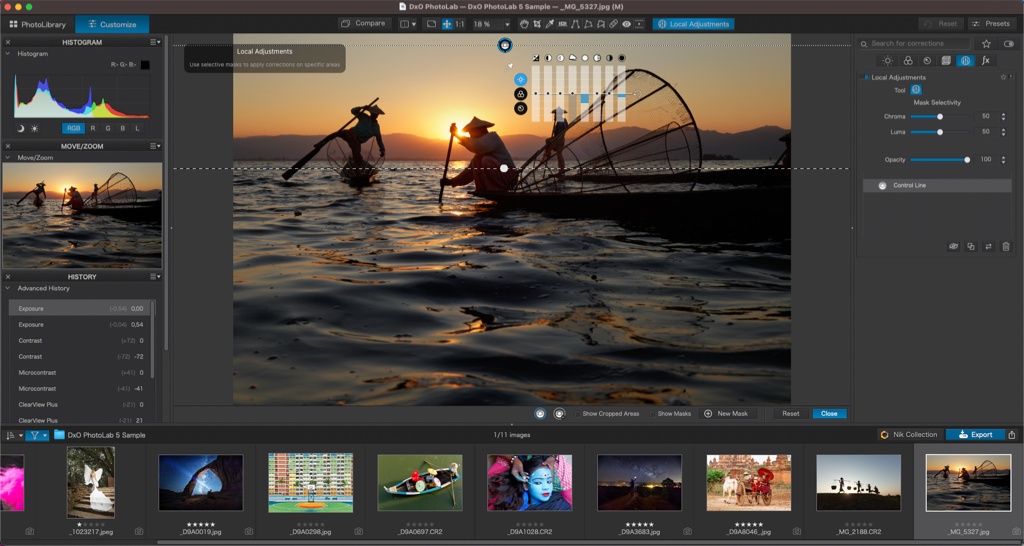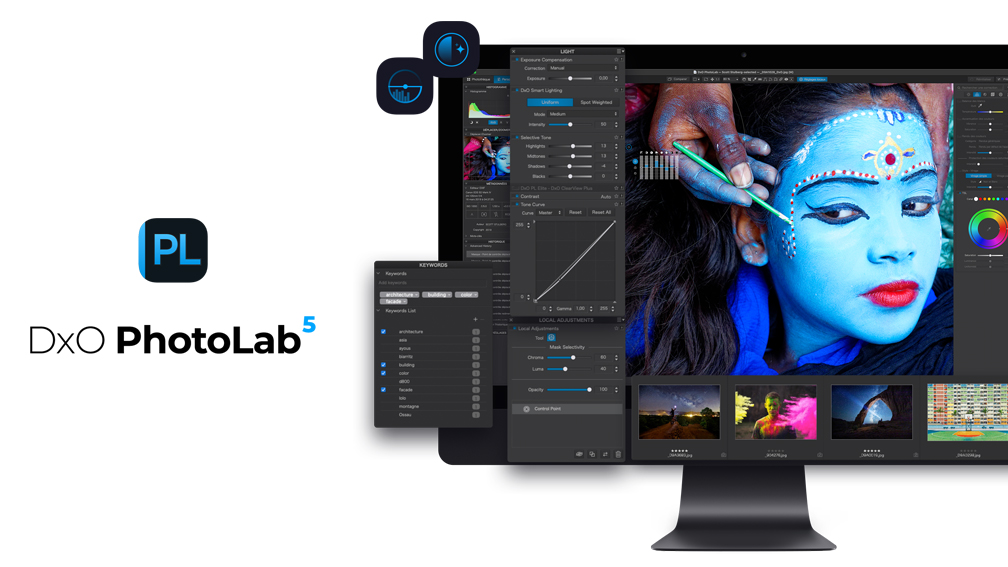Fujifilm Support, Better and More Metadata
Review by Erik Vlietinck
Every year DxO releases a new version of PhotoLab, and this year was no exception. PhotoLab 5 comes with better IPTC metadata and keyword editing capabilities as well as synchronization with Adobe Lightroom, a new U-Point control, a much-improved DeepPRIME, and support for Fujifilm X-Trans cameras and lenses.
Starting with the last, the support extends to the newer X-E4, X-S10, X-T4, and X100V through to the older X-E2 and X-70. Combined with lens support, some 605 new modules have been added to DxO’s database of calibrated equipment.

DxO’s DeepPRIME is now four times faster in PhotoLab 5. It was already better than PRIME, which is still available as an option (as is manual noise removal), and it’s much better than any competitor’s noise-removing algorithm.
U-Point adjustments have gained a Control Line effect that lets you pick a color to limit the region affected by the mask, but instead of a circle, you have a line along which the effect is created. With every U-Point, you can now also base the effect on luminance and chrominance values. The first time I tried the new U-Point, it resulted in frighteningly intense screen flickering with large dark rectangles appearing, but I couldn’t reproduce that later on.
The metadata improvements are, let’s be honest, greatly overdue. The editing of them instantly synchronizes with Adobe’s Lightroom metadata, which isn’t a surprise, as the metadata is generated in a sidecar file. Surprising is that the file isn’t in standard XMP, which can be read by other apps as well. Instead, it’s written in a format only Lightroom understands. Photographers might use other software besides Lightroom, so if apps such as Photo Mechanic can’t read the sidecar files that PhotoLab 5 creates, it’s hard to understand what the fuss is about in this area. ■






